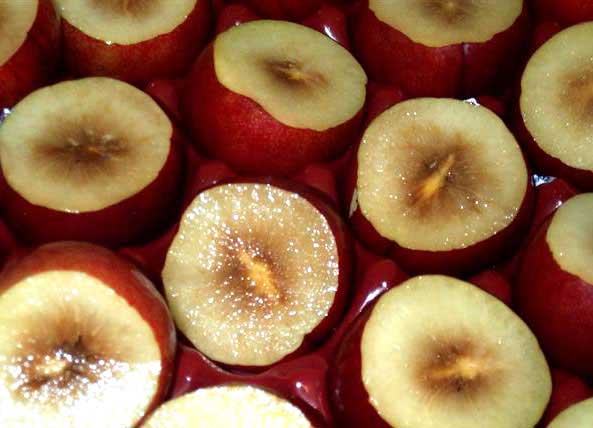When inspecting plums it always a good idea to cut a few plums in each sample to look for internal discoloration. There is usually no external indication which plum might show the problem. As a common practice, I start cutting the plums with the most give, the riper plums in the sample. If those plums show indications of internal discoloration then I continue to cut the remainder of the plums in the sample, leaving the most firm plums for last. If only the softer plums are showing the problems then I would only cut those plums in subsequent samples.

As you can see from the image above, always make a crosswise cut, in the middle of the plum. The plums with internal discoloration will show a discolored flesh ranging from a darker than normal flesh color to a very dark color.
According to the USDA Inspection Instructions, if you notice the flesh is darker in color than the normal flesh of a good plum, it is to be scored as Damage. If the affected flesh shows any dark discoloration or if it is soft, then the plum would be scored as Serious Damage.
Confused?
In order to interpret what the USDA is saying, the plum may be scored as Damage or as Serious Damage by internal discoloration, depending on the color of the discoloration. If it is only slightly discolored, score it as Damage, if it is dark, as shown above, then the plums would be scored as Serious Damage.
What’s the difference, it is still a defect right? Yes, no matter how dark the internal discoloration appears it is always a defect. But you are allowed 12% of the plums, with damage by internal discoloration, and only half that amount, or 6% of the plums with serious damage by internal discoloration.

No Comments on “Plums- Internal Discoloration”